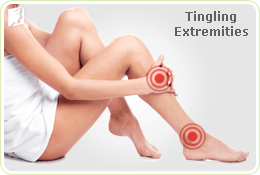Specific recommendations/precautions to prevent burn injuries by individuals, communities -Primary prevention:-
Enclose fires and limit the height of open flames in domestic environments. Cooking on floor should be avoided.
Restrain playing of toddlers in kitchen/cooking area.
Watch the child constantly especially around gas burners, stoves, ovens, microwaves, heaters and other appliances.
Turn pot handles toward the back or center of the stove to prevent tipping.
Never cook while holding a child.
Carefully use electrical appliances and switch off all electrical appliances when not in use.
Avoid use of unauthorized gas cylinders & kerosene stove/chulha. Use safe stoves and lamps.
Avoid loose clothing while cooking. Tie up loose saree end (pallu) or stole (chunni) properly.
Never hold a cup of hot liquid near infant/toddlers.
Check the temperature of water before bath.
Beware of high tension wires passing over terrace or balcony and do not keep open electrical wires at home.
In India, fireworks injuries commonly occur during Diwali (Festival of Lights).
Diwali safety:-
Supervise children while lighting fire crackers.
Do not hold the cracker while bursting.
Don’t point the burning fireworks towards you/others.
Don’t fiddle with un-burnt crackers.
Always light or burst crackers in open area /ground.
Acid-throwing: Intensified legal reforms to the crime, restricted availability of acid and chemicals for general public and changing attitude of society so that person attacking in this way is no longer acceptable may be the effective steps in prevention. Handle chemicals (acids) carefully.
Promote fire safety education and the use of smoke detectors/smoke alarms, fire sprinklers, and fire-escape systems in homes/buildings. Smoke alarms provide an early warning system; alerting people and allowing them time to escape before the fire spreads.
Improve treatment of medical conditions such as epilepsy.
During thunderstorms:-
Get inside a home, building (away from doors and windows, metal objects such as pipes, sinks, radiators, and plugged-in electrical appliances),
When outside and unable to find shelter, maintain distance from tall trees.
Lightning can travel through water, therefore avoid swimming, boating and bathing during a thunderstorm
Secondary Prevention: Both pre-hospital and hospital care play an important role in the management of burn patients by preventing deaths and disability.
First aid: Education and sensitization of individuals/communities on the site management in the form of first aid can further help in early recovery of the burn patients.
Better hospital care: These include better initial treatment to prevent shock and breathing problems, better infection control, increased use of skin grafts and assuring adequate nutrition. These measures can minimize the burden of death, disability and suffering from burns.
Tertiary prevention:-
Rehabilitation- Burn survivors are often left with disability and disfigurement that interferes with their future life. Rehabilitation measures such as physical therapy and addressing psychological issues can assure a better life in burn survivors.
National Programme for Prevention, Management and Rehabilitation of Burn Injuries (NPPMRBI):
Death and disability due to burn injury are preventable to a great extent provided timely and appropriate treatment is given by trained personnel. To strengthen the preventive, curative and rehabilitative services for burn victims, Directorate General of Health Services, Ministry of Health and Family Welfare, Government of India has initiated “National Programme for Prevention, Management and Rehabilitation of Burn Injuries (NPPMRBI)” during the 12th Five Year Plan.
The programme is being implemented through state government Medical Colleges and District Hospitals with the objective to reduce the incidence, morbidity, mortality, and disability due to burn injuries.
Awareness generation, providing adequate health facilities with proper infrastructure and trained manpower for management and rehabilitation of burn patients and research are the priority fields for the program.



 Contact Us
Contact Us







 Hospitals
Hospitals
 Doctors
Doctors
 Diagnostic
Diagnostic
 Pharmacy
Pharmacy
 Health Tips
Health Tips
 Blog
Blog

























Comments